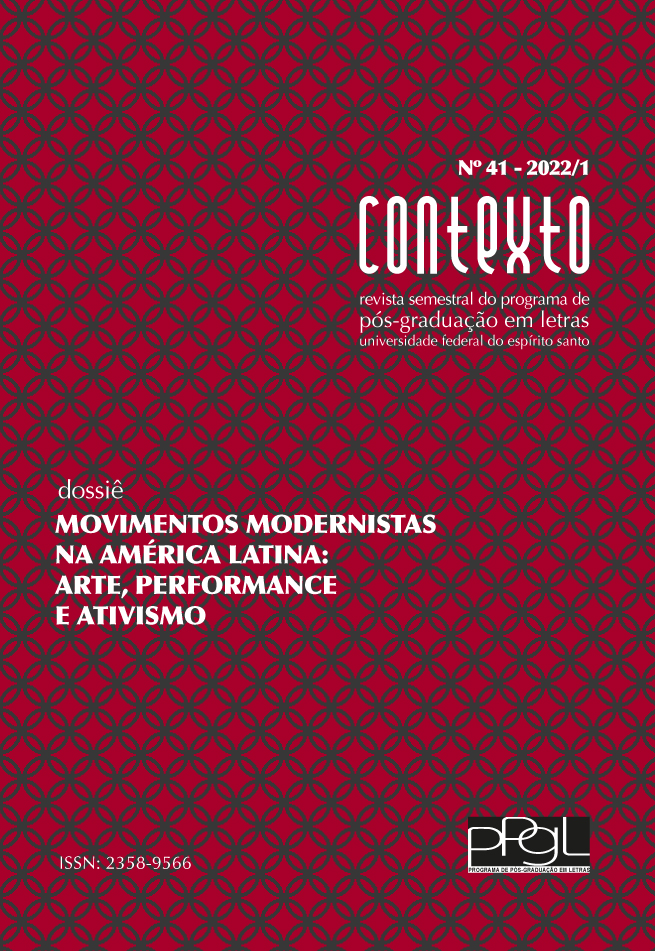Borges e Sabato: uma relação intranquila
Borges and Sabato: an uneasy relationship
DOI:
https://doi.org/10.47456/contexto.v1i41.37206Palavras-chave:
Ernesto Sabato. Jorge Luis Borges. Ensaio. Literatura. Ciência.Resumo
Na América Latina, a escrita de ensaios tornou-se um instrumento de interpretação das realidades sociopolíticas e econômicas, assim como uma expressão artística que se dá em plena relação com o mundo, adotando formas que vão da autobiografia, passando pela crônica, até a reflexão estética. Nesse sentido, um dos grandes representantes latino-americanos desse gênero é o escritor argentino Ernesto Sabato. Sua obra ensaística reflete não só as características tradicionais do ensaio, mas também suas avaliações sobre diferentes autores e obras. Como um dos autores mais citados e analisados por Sabato é Jorge Luis Borges, este artigo examinou a visão daquele autor sobre a obra e o pensamento borgeano. O objetivo foi apresentar pontos de convergência e divergência entre o pensamento desses dois escritores e discorrer sobre algumas das causas que motivaram as críticas de Sabato à obra de Borges. Para fundamentar essa análise foram utilizados como referência diversos ensaios escritos por Sabato, dando-se especial atenção a Uno y el universo (1945), El escritor y sus fantasmas (1963) e Tres aproximaciones a la literatura de nuestro tiempo (1968).
Abstract
In Latin America, essay writing has become an instrument to interpret socio-political and economic realities and an artistic expression that takes place in full relationship with the world, adopting forms going from autobiography, passing through short story, and reaching the aesthetic reflection. In this sense, one of the greatest Latin American representatives of this genre is the Argentinean writer Ernesto Sabato. His essays reflect not only the traditional characteristics of the genre but also his assessments of different authors and works. One of the authors most cited and analyzed by Sabato was Jorge Luis Borges; so this article examined that author's view of Borges’ work and thought. This study presents points of convergence and divergence between the thoughts of both writers, and discuss some of the causes that motivated Sabato's criticism of Borges' work. To support this analysis, several essays written by Sabato were used as a reference, giving special attention to Uno y el universo (1945), El escritor y sus fantasma (1963), and Tres aproximaciones a literatura de nuestro tiempo (1968).
Downloads
Publicado
Edição
Seção
Licença
Copyright (c) 2022 MARGARETE JESUSA VARELA CENTENO HÜLSENDEGER

Este trabalho está licenciado sob uma licença Creative Commons Attribution-NonCommercial 4.0 International License.

Este obra está licenciado com uma Licença Creative Commons Atribuição-NãoComercial 4.0 Internacional.





